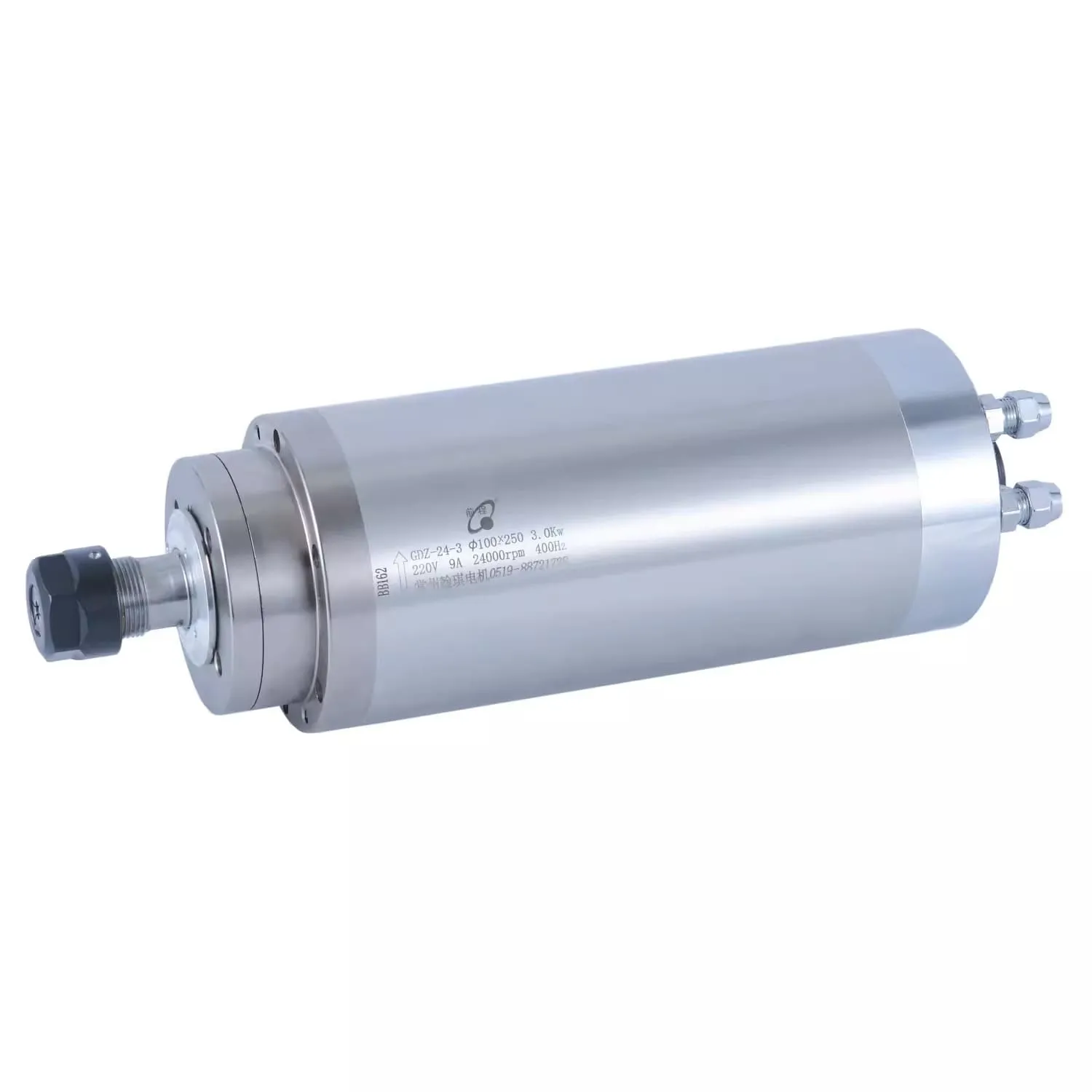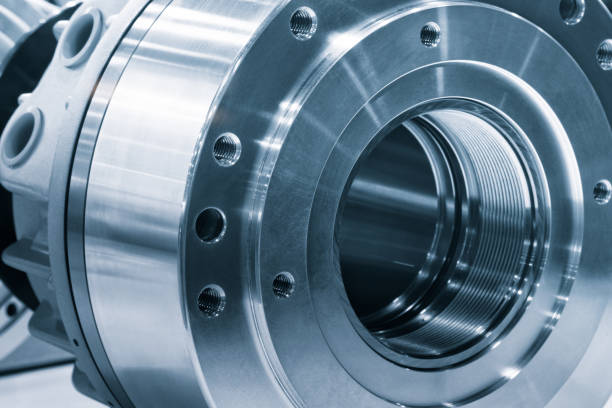If you’re interested in a high-tech, rewarding career in manufacturing, becoming a CNC machine programmer might be the ideal path for you. As the backbone of modern manufacturing operations, CNC programming offers a world of opportunities, blending skills in engineering, technology, and precision manufacturing. In this guide, we will discuss how to become a CNC machine programmer from start to finish. We’ll cover everything from the training programs available to career opportunities and salary expectations. Whether you are a beginner or have some knowledge of CNC machining, this guide will provide you with all the information you need to make an informed decision.
What is a CNC Machine Programmer?
Defining the Role
A CNC machine programmer is a specialist responsible for writing and modifying the programs that control CNC machines. These machines use computer software to perform tasks such as cutting, drilling, milling, or turning materials like metal, plastic, and wood into precise parts. Unlike CNC machinists who operate these machines, CNC programmers are the brains behind the scenes—creating instructions that dictate how a CNC machine functions.
Key Responsibilities
The responsibilities of a CNC programmer include:
- Reading and Interpreting Blueprints: Understanding engineering drawings and translating them into CNC programs.
- Creating CNC Programs: Using CAM software such as Mastercam or Fusion 360 to write programs that control the machines.
- Testing and Optimizing Programs: Running simulations to ensure that the program is efficient and error-free.
- Machine Setup: Occasionally setting up the machine with the correct tools and settings to run the program successfully.
- Collaboration: Working with CNC machinists and engineers to troubleshoot any issues during production.
The Skills You Need to Become a CNC Programmer
Technical Skills
To be successful as a CNC programmer, you need to develop a variety of technical skills, including:
- CAD/CAM Software: Proficiency in programs like AutoCAD, SolidWorks, Mastercam, or Fusion 360 is essential for creating CNC programs.
- G-Code and M-Code: Understanding these programming languages is crucial since they form the basis of CNC machine operation.
- Blueprint Reading: Ability to read and interpret engineering diagrams is necessary to accurately program machines.
- Mathematics: Geometry, trigonometry, and algebra are essential for creating accurate programs and ensuring that parts are manufactured to precise specifications.
Soft Skills
- Problem-Solving: CNC programming often involves troubleshooting problems, so being a natural problem-solver is important.
- Attention to Detail: The precision required in CNC machining means that attention to detail is a must.
- Communication: Working with machinists, engineers, and other team members requires good communication skills to ensure that everyone is on the same page.

To achieve the best performance from your CNC programs, investing in high-quality spindles like our 24000RPM 3KW ER20 Water-Cooling Spindle can greatly enhance precision and consistency.
Steps to Become a CNC Machine Programmer
1. Obtain a High School Diploma or GED
The first step towards becoming a CNC programmer is to have a high school diploma or GED. Focus on subjects like math (algebra, geometry, trigonometry), computer science, and shop classes that provide you with a basic understanding of manufacturing processes.
2. Enroll in a CNC Training Program
To build a foundation, enroll in a CNC training program at a community college or technical school. These programs usually take about one to two years and cover the basics of CNC programming, including blueprint reading, safety protocols, and machine operation. Many schools also offer certificates in CNC programming that can be completed in less time.
3. Learn CNC Programming Software
To become a proficient CNC programmer, you need to learn CAD/CAM software. CAD is used for designing parts, while CAM is used for generating tool paths that CNC machines follow to create the parts. Mastercam, Fusion 360, and SolidWorks are commonly used software in modern machine shops. Enrolling in specialized courses or workshops on these programs will enhance your understanding.
4. Gain Practical Experience through an Apprenticeship
Apprenticeships are a fantastic way to get hands-on experience while learning. These programs generally last between 1-3 years and offer an excellent opportunity to learn from experienced machinists and programmers. During an apprenticeship, you’ll not only learn about CNC programming but also gain practical experience in machine setup and operation.
5. Get CNC Certified
After completing your training, consider getting CNC certified through organizations like NIMS (National Institute for Metalworking Skills). Certification shows employers that you have the skills and knowledge required to be an effective CNC programmer. You can pursue different levels of certification based on your skill level.
6. Apply for CNC Programmer Jobs
Once you’ve gained the necessary skills and certifications, it’s time to apply for jobs. Look for job postings in modern machine shops, aerospace companies, automotive manufacturers, and other industries that use CNC machining.
Types of CNC Programming
1. Manual G-Code Programming
G-Code is the language that CNC machines understand, and learning to write it manually is an essential part of becoming a skilled CNC programmer. Though most modern programming is done using CAD/CAM software, understanding the fundamentals of G-Code allows you to troubleshoot issues effectively.
2. CAD/CAM Programming
The use of CAD/CAM software has made CNC programming more accessible. The programmer creates the part in CAD, and then the CAM software converts the design into G-Code. This method is faster and often more efficient, particularly for complex parts.
3. Conversational Programming
Conversational programming is a simpler form of CNC programming available on some machines, allowing operators to input basic commands without needing to write extensive G-Code. This method is suitable for straightforward parts but lacks the flexibility of CAD/CAM for complex designs.
Tools and Equipment Used by CNC Programmers
CNC Software
- Mastercam: One of the most popular CAM programs used for creating CNC programs.
- Fusion 360: A cloud-based CAD/CAM software widely used in CNC machining.
- SolidWorks: Commonly used for 3D modeling, it helps in visualizing the final product before programming begins.
Spindles and Cutting Tools
High-quality spindles and cutting tools are essential for executing precise CNC programs. Using a reliable spindle like the 2.2KW ER20 Air-Cooled Spindle ensures that your CNC machine can maintain consistency and accuracy.

Career Opportunities for CNC Programmers
Industries That Hire CNC Programmers
CNC programming skills are in high demand across a variety of industries. The major industries that employ CNC programmers include:
- Aerospace: Creating high-precision components for aircraft and spacecraft.
- Automotive: Manufacturing custom parts for vehicles and ensuring precise fitting.
- Medical Devices: Producing surgical instruments and prosthetics with intricate detailing.
- Tool and Die: Creating molds and dies for manufacturing other parts.
Job Titles and Career Growth
Starting as a CNC programmer, you can advance into higher positions with experience and further training. Here are potential career paths:
- CNC Operator: The starting point for many, focusing on operating the CNC machine.
- CNC Programmer: Writing and optimizing the code that runs the machine.
- CNC Supervisor: Managing other CNC operators and programmers, ensuring efficient workflow.
- Manufacturing Engineer: Overseeing the entire production process, using experience in CNC to improve quality and efficiency.
Salary Expectations for CNC Programmers
CNC programmers generally earn higher salaries than CNC operators due to their specialized skills. The average annual salary for a CNC programmer in the United States ranges between $50,000 and $70,000, depending on experience, location, and the specific industry. Advanced programmers who work with 5-axis machines or in specialized fields like aerospace can earn significantly more.
Challenges in Becoming a CNC Programmer
Complexity of Learning Programming Languages
One of the main challenges aspiring CNC programmers face is learning G-code and M-code. These languages can be complex, and mastering them requires both study and hands-on practice. However, understanding these codes is essential to be able to optimize machine performance and troubleshoot issues.
Keeping Up with Technological Advancements
Technology in CNC machining is continually evolving. CAD/CAM software gets updated regularly, and new techniques for optimizing machine performance are always being developed. To stay competitive, CNC programmers must commit to lifelong learning and continuous skill development.
Tips for Success in CNC Programming
- Practice Regularly: The best way to become proficient in CNC programming is through regular, hands-on practice.
- Stay Updated: Join forums, read industry news, and stay updated with the latest developments in CNC machining.
- Get Certified: Certifications from recognized bodies like NIMS will set you apart in the job market.
- Network: Connect with other machinists, attend workshops, and participate in online communities related to CNC machining.
FAQs
1. What is the best way to learn CNC programming?
The best way to learn CNC programming is through a combination of formal education, hands-on training, and using CAD/CAM software. Enrolling in a community college or trade school program is a good start.
2. How long does it take to become a CNC programmer?
Becoming a CNC programmer typically takes between 1 to 2 years, depending on the type of training you pursue and whether you complete an apprenticeship.
3. What software do CNC programmers use?
CNC programmers commonly use Mastercam, Fusion 360, and SolidWorks for CAD/CAM programming.
4. Is CNC programming a good career?
Yes, CNC programming is a well-paying career with opportunities for growth, especially in industries like aerospace, automotive, and medical device manufacturing.
5. Can you learn CNC programming online?
Yes, there are many online courses available for learning CNC programming, including platforms like Udemy and Coursera. However, hands-on practice is crucial for mastering this skill.
Conclusion
Becoming a CNC machine programmer is an excellent career choice for those interested in technology, manufacturing, and engineering. The role involves creating the programs that control CNC machines, enabling the production of precise parts used in industries like aerospace, automotive, and medical devices. By obtaining the necessary education, completing hands-on training, and getting certified, you can embark on a fulfilling career in CNC programming.
Investing in high-quality CNC tools like the 24000RPM 3KW ER20 Water-Cooling Spindle will help ensure precision and efficiency in all your CNC projects. With the right tools, training, and determination, the world of CNC programming offers a promising and rewarding career path.

